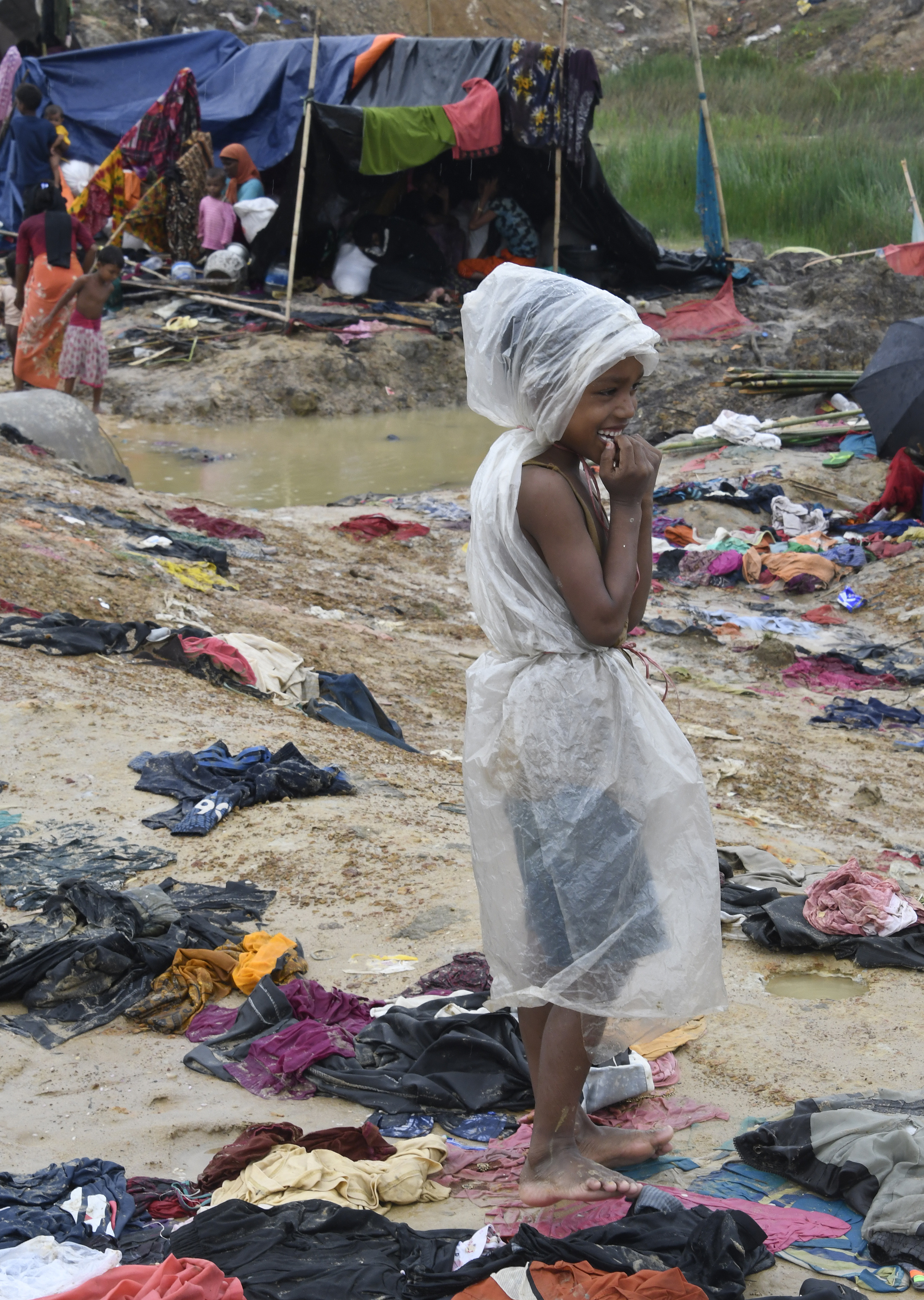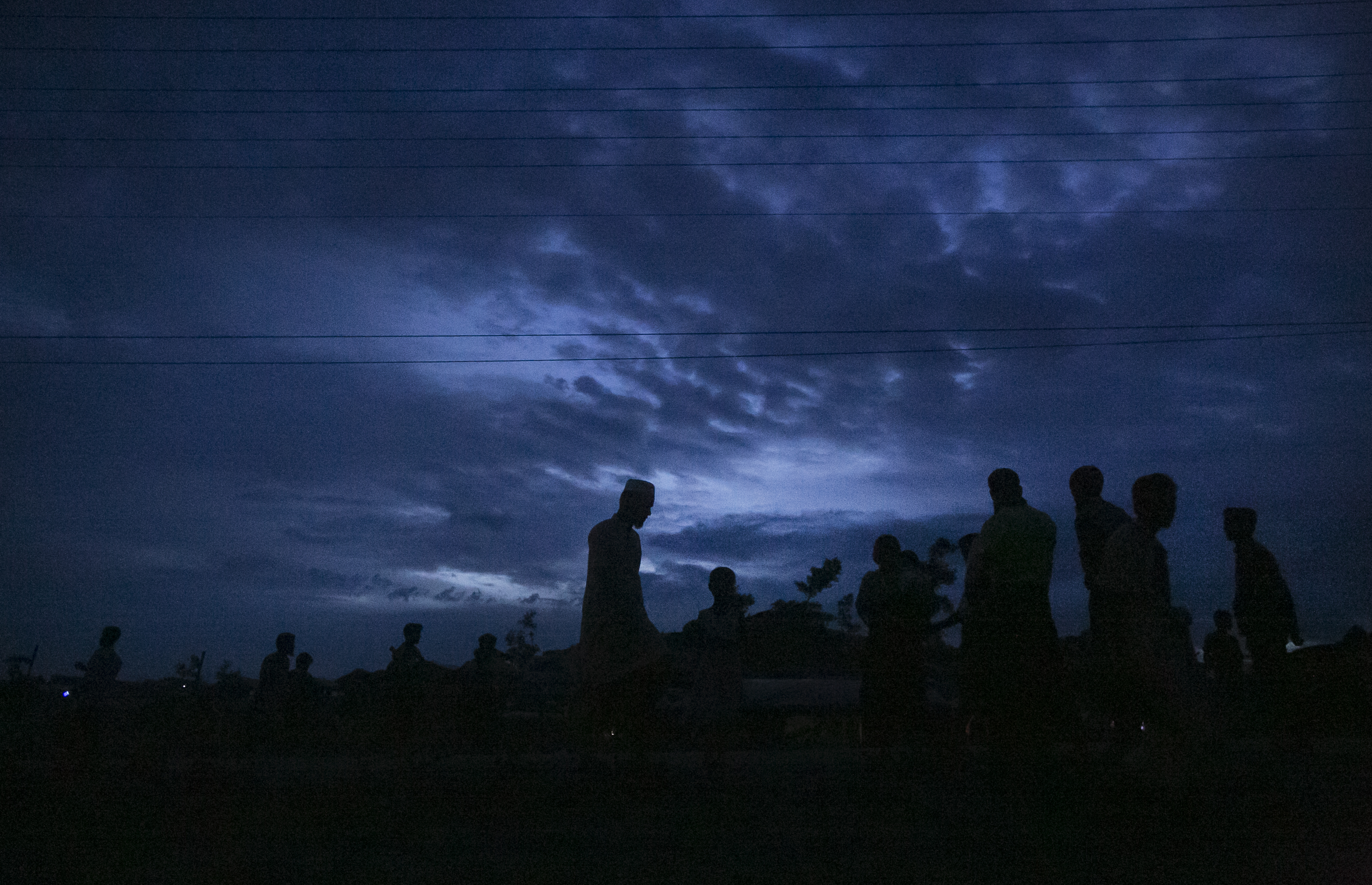Myanmar has been careening ever deeper into crisis for several weeks. On August 25th, an insurgent army of the Rohingya people—a stateless Muslim group in the majority-Buddhist country—attacked state security forces. The military responded with a brutal counterinsurgency, one that included torture, summary killings, and the mass displacement of civilians. The Myanmar government has since largely cut off aid operations to conflict-torn areas.
Violence centered around the Rohingya, particularly in the impoverished state of Rakhine, on Myanmar’s western coast, isn’t new. Last year, for instance, on October 9th, the Arakan Rohingya Solidarity Army—the group that also carried out last month’s attacks—killed a dozen officers across state security outposts. Over the next few days, the Myanmar military’s reprisal forced thousands of Rohingya, as well as other civilians, across the border into nearby Bangladesh. Many of those who escaped the violence reported that their villages had been burned down and that innocent civilians had been killed. Four years before that, a string of riots in 2012 claimed more than 100 lives and forced some 140,000 more into squalid refugee camps. The plight of the Rohingya has routinely left them vulnerable to abuse by smugglers, as they take to rickety boats and attempt to look for sanctuary elsewhere; in 2015, increased attempts at migration led to a regional refugee crisis.

(Photo: Dominique Faget/AFP/Getty Images)
Yet the severity and speed with which the current crisis is escalating threatens to make it the worst flare-up of mass migration Myanmar has seen in decades. These developments, in a country allegedly moving toward democracy, can also seem more dire than before.
In the past several weeks, an estimated 400,000 Rohingya and 30,000 ethnic Rakhine Buddhists have fled Myanmar to Bangladesh. In response, the international community has vociferously condemned Myanmar’s political elites, who are apparently unwilling to take positive action. On September 7th, South African bishop and anti-apartheid activist Desmond Tutu, who received the Nobel Peace Prize in 1984, told the following of his fellow Nobel laureate and Myanmar’s de facto leader Aung San Suu Kyi in an open letter: “It is incongruous for a symbol of righteousness to lead such a country. If the political price of your ascension to the highest office in Myanmar is your silence, the price is surely too steep.” And, last week, on September 11th, Zeid Ra’ad Al Hussei, the United Nations high commissioner for human rights, commented that the crackdown against the Rohingya is a “textbook example of ethnic cleansing.” (Still, as some observers have noted, Suu Kyi is hamstrung by a power structure that heavily favors the military.)
Despite the chorus of condemnation, though, it’s unclear what, if anything, the government in Myanmar will do to avert further tragedy—or at least to quiet uproarious onlookers abroad. One of the reasons for pessimism is that the Rohingya have long lacked allies in Myanmar. While the most fervent opponents of the Rohingya are nationalist groups largely pulled from networks of Buddhist monks (many of whom contend that the Rohingya are religious interlopers), anti-Rohingya beliefs run quite deep throughout Myanmar, including among its pro-democracy leaders, and these views are bolstered by a dispiritingly effective government propaganda effort. Indeed, according to a recent Reuters analysis, “If there’s one thing that unites Aung San Suu Kyi’s party, the army that once tried to crush her, and the majority of people in mostly Buddhist Myanmar, it is their vehement dislike of the Rohingya Muslims, seen as a threat to national security.”
Perhaps what’s so devastating about the latest violence is the widespread attitude of inaction. For one, the Myanmar government isn’t alone in abusing a group that’s been called the world’s “most persecuted minority“; even reporters among Myanmar’s nascent independent media have shown a readiness to push for a “both sides” argument in the face of the ongoing Rakhine conflict and to buy into flimsy government claims that the violence unfolding in the quasi-democratic country had been incited by a “huge iceberg of misinformation,” as Suu Kyi recently put it. Meanwhile, many of Myanmar’s neighbors—and the United States—are similarly skittish to do much besides voice worry and issue boilerplate statements, leaving the future for international involvement murky.

(Photo: Allison Joyce/Getty Images)
This isn’t to suggest, of course, that nothing is being done. Most notably, only hours before last month’s attacks, a government-appointed commission, chaired by former U.N. Secretary General Kofi Annan, delivered to Suu Kyi’s government recommendations on how it might finally move toward resolving tensions in Rakhine State. Among these recommendations are suggestions to create a path to citizenship for the Rohingya, enable greater freedom of movement, and foster a “calibrated response” to security threats, so as to avoid brutal military counterinsurgencies in the wake of violence.
Even so, in light of Suu Kyi’s national address on Tuesday and her unconvincing expressions of concern over the current Rohingya exodus, it’s become increasingly evident that calls for justice in Myanmar will remain as bloodless as the will of those with the power to act.





